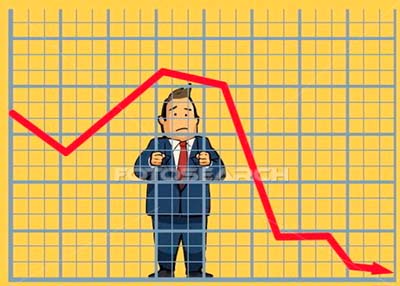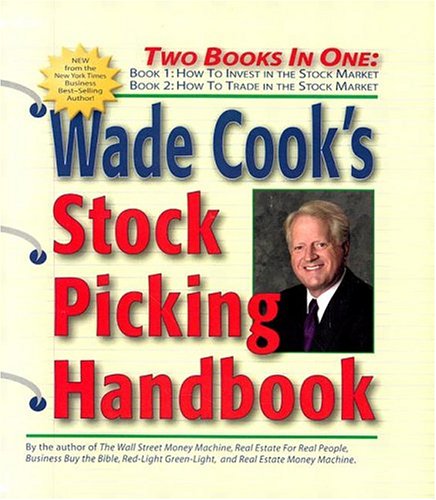09.23.2009
05.12.2010 updated

Channeling Stocks: Does it work or is it hype?
Investor Education Series written by Net Advisor™
I have been to countless seminars over the last 20+ years, and I do try to go to everyone of those hyped infomercial about investing. Those are the ones I find it is easy to poke holes in the get rich quick, make $1000’s by trading in your spare time, or whatever slanted version of that theme with an accompanied overpriced program they are selling.
During the 1990’s I found one of these financial seminar guys named Wade Cook to be very persuasive and entertaining. I had clients who went to his programs (not by my advice or suggestion), and swore by him. So I ended up going to several of his programs, bought some materials and tried to figure this one out.

I recall Cook frequently touting Biblical references, when it came to investing and refereed to him as a “good Christian,” even thought he was Mormon.
Cook did seem to use some basic investment principles, such as ‘don’t gleam the field.’ The term gleam means to shine, shine brightly, however Cook, in my interpretation and recollection, saw this as, ‘if you made money on a stock or option, its OK to leave some money on the table for the next person; don’t try and take all the profit, as it is hard to do, and you could end up losing.’ I was OK with that. I saw this as a basic investment timing principle, where one doesn’t always buy at the bottom, or sell at the top, but what you want to insure is that you make a profit, and forgot how much more extra you could try and get.
Cook frequently discussed that he basically started out as a taxi cab driver turned Wall Street trading guru. I guess that should be your first red flag. Sure, it is theoretically possible to learn to be an investment pro with no experience, training, or having prior work in the industry, but how many people do you know that go from cab driver to millionaire trading stocks.
Cook also claimed to be able to make 20% a month by using his stock trading/ investing strategies. Turns out that Cook, like a lot of these guys didn’t make his money trading stocks, it was hawking books, videos, and seminars.
Cook charged up to $5,695 per person to go to one of his many Wall Street Workshops. Somehow, I don’t ever recall having to pay any money to go to any of his programs. Maybe because I was a stock broker (Financial Advisor) with a major Wall Street firm at the time, and I told them that a number of my clients were already attending, and perhaps (this is speculation on my part) that the Cook team thought I would be good for their business, thus getting more clients to attend Cooks programs.
We’ll I never recommended anyone to go, and raised high caution from a compliance view that I could not echo any of Cook’s investment returns or other hyped claims, as some of that would fall under as an SEC violation (promising or leading to suggest high probability of future performance), and I could get fined, fired and sued. No thanks.
One of Cook’s investment themes was “Channeling” also referred to as “rolling stocks” where Cook in part popularized this concept in the late 1990’s.
Although Mr. Cook’s issues were not all necessarily related to “channeling” or “rolling” there was much discussion at seminars and on TV about this idea and with other ideas. Mr. Cook filed for bankruptcy, had legal issues with the SEC and the FTC, and went to prison in 2007 for tax evasion.
Many others have jumped on this making money trading stocks band-wagon, including an outfit known as “Channelingstocks.com” According to a report, the company was started by Tim Desotell who owned a local deli and frozen custard shop, and Tim Thompson, a telecommunications operations manager both out of Wisconsin (source).
The company’s website charges currently (at time of original post) about $30 month, with no free look period. The website claims it would be ‘unfair to their paying users’ to offer a free trial.
Commercial Hype?
The popularized or rather, highly advertised ‘theory,’ more rather like a is that a stock is subject to a predictable movements based on the charts where it will hit a fixed peak then fall to a fixed trough, then hit the peak, and fall to the same fixed trough.
The thinking is that a stock will do this repeatedly (buy stock at $1.00 it goes to $2.00, then buy at $1.00 and it goes to $2.00, etc, and as their commercials and CEO has suggested (YouTube Video).In this same video (@2:15 to 2:28) , the CEO mentions what sounds like “MPRO” stock that “channels” from $6 to $8 and has done this “consistently” for about a “year.” This may have been true at time of the video, however if the stock is “MPRO – Material Processing,” according to Yahoo! Finance, is no longer trading as of 12-01 (year not stated). If the stock is “NPRO – Norwegian Property,” the stock never traded in this $6 to $8 range, and also does not trade in the USA.
The reality is one should not expect to have a stock double (go from $1 to $2), lose 50% (back to $1), then double again (from $1 to $2), lose 50% (back to $1), then double again (from $1 to $2), and do this for any period of time. Any suggestion to the contrary is not normal, and I would argue is misleading and not representative of how the stock market works.
The Los Angeles Times called “Channeling” in 2002, the latest trading fad.
I would also argue against the said CEO’s point referring that this is a “safe strategy,” as he indicated in the Fox interview. Safety refers no risk. There is inherit risk when investing in stocks, options and other investments.(Note last two links to those videos are gone off their website. Found one of them here: YouTube Video.
Tim Thompson, President & CEO of channelingstocks.com acknowledged at no more than “1%” in his estimate of stocks fit this profile. (Note after updating this article, the link to these videos from channelingstocks.com were removed, deleted, or otherwise no longer on their website (404 error). So I went to YouTube to find them.
After reviewing some of their YouTube videos they seem to have greatly toned down their boasting of probability of success from there earlier TV commercials, and now call their strategy a “theory.” The company president, Tim Thompson admitted here that of the 25,000 stocks that trade actively, less than 1% of stocks meet this “channeling theory.” (Source: YouTube video at 3: 30 to 3:37)
So What Are They Really Doing?
Stocks can have periods of what is called a “trading range” where:
(1) a stock is subject to trade within a range (seems similar to channeling) but this does not last forever; and
(2) stocks don’t always hit their top and bottom of ranges exactly or every-time, nor do they do this repeatedly for an extended period of time.
At some point a stock will break above the trade range, “a break out” or fall below its support level and thus “break down.” Most stocks have suffered the ladder of the last 2 years (2007-2009) and same is true in the .com bust (2000-2002) and many more times in history.
All of this really falls under what is called, “Technical Analysis.” Anyone who wants to tech technicals or how to better invest is great. Making people think they can make a ton of money by just following a ‘simple stock trading formula’ pushes the border to gross misrepresentation.
Quite a few stocks have experienced a break out after plunging for the last 2 years (starting in March 2009).
It is also interesting to note that there are a lot of other commercials and infomercials (such as Vector Vest, Teach Me to Trade, Better Trades, and many others seem to suggest if people had just bought their chart, paper or other programs way back when, they could have made off with a lot of money or avoided losses. How come these programs are not advertised BEFORE these key events?
I can look at any chart and tell you that in hindsight how to make every trade a winner. It just doesn’t work that way.
Most of these types of companies are not investment advisers, so they are not under FINRA or SEC regulation for advertising or compliance. They fall under FTC’s rules for public advertising, and thus are responsible for the representation that they make.
If you see an infomercial about trading and investing, I have carefully come to the conclusion over 20+ years seeing them, to exercise higher caution of the program when the infomercial contains any of the following:
- has a yacht in it
- take places on an exotic island
- shows someone skiing like they are an expert
- contains a vehicle of vehicles over $150,000 in value
- the persons doing the interviews are ~23 year old models with enhanced chests
- suggests that you can have your dream vacation, pay bills, free time, have extra money
- offers testimonials showing only the best case scenarios
- generally showing you things that you don’t have and are not likely going to have
I am being a little humorous here, but if you have watched similar infomercials, this is pretty much what images they use to sell you. I don’t know any professional traders who do this part time and are successful. It is not a connect-the-dots and then you made it job. It’s a lot of work, and requires a lot of time and constant study.
There are a few people who actually use these kinds of programs and make money at times. It is similar to the Dart Board Theory. If you have 1000’s of people trying a program, a few are bound to get lucky. I would like to see some independent studies or be able to interview them to see how they have done over 10+ years.
Generally educating people about investing is great. I would be a little cautious and would not relying on heavily marketed programs as gospel. If they were so accurate, EVERYONE would be rich.
__________________________________________________________________________
Image(s) copyright by respective owner.
Copyright © 2010 Net Advisor™ All Rights Reserved.
Revised copyright 2016 NetAdvisor.org® All Rights Reserved.
NetAdvisor.org® is a non-profit organization providing public education and analysis primarily on the U.S. financial markets, personal finance and analysis with a transparent look into U.S. public policy. We also perform and report on financial investigations to help protect the public interest. Read More.
__________________________________________________________________________
